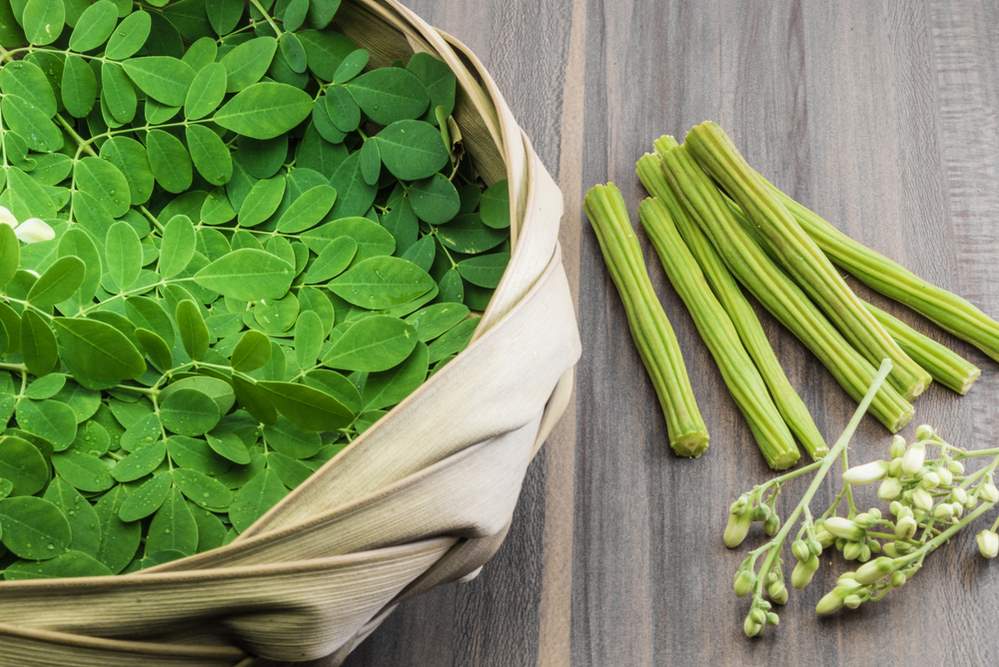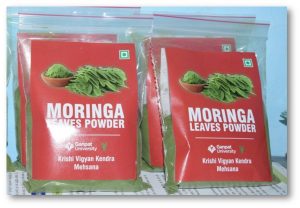Moringa- drumstick Or horseradish
Moringa, (Moringa oleifera), also called horseradish tree or drumstick tree, small deciduous tree (family Moringaceae) native to tropical Asia but also naturalized in Africa and tropical America. Flowers, pods, leaves, and even twigs are cooked and eaten. The leaves, which can also be eaten raw when young, are especially nutritious and are high in iron, potassium, and vitamin C. A horseradish-flavoured condiment is prepared from the crushed roots. Ben oil, extracted from the seeds, is used by watchmakers and in cosmetics; perfume makers value it for its retention of scents.


Moringa Description
M. oleifera is a fast-growing, deciduous tree that can reach a height of 10–12 m (32–40 ft) and trunk diameter of 45 cm (1.5 ft). The bark has a whitish-grey color and is surrounded by thick cork. Young shoots have purplish or greenish-white, hairy bark. The tree has an open crown of drooping, fragile branches, and the leaves build up a feathery foliage of tripinnate leaves.
The flowers are fragrant and hermaphroditic, surrounded by five unequal, thinly veined, yellowish-white petals. The flowers are about 1.0–1.5 cm (1/2 in) long and 2.0 cm (3/4 in) broad. They grow on slender, hairy stalks in spreading or drooping flower clusters, which have a length of 10–25 cm.
Flowering begins within the first six months after planting. In seasonally cool regions, flowering only occurs once a year in late Spring and early Summer (northern hemisphere between April and June, southern hemisphere between October and December). In more constant seasonal temperatures and with constant rainfall, flowering can happen twice or even all year-round.
The fruit is a hanging, three-sided brown capsule of 20–45 cm size, which holds dark brown, globular seeds with a diameter around 1 cm. The seeds have three whitish papery wings and are dispersed by wind and water.
In cultivation, it is often cut back annually to 1–2 m (3–6 ft) and allowed to regrow so the pods and leaves remain within arm's reach.
Watch the Video on Moringa / Saragava
https://www.youtube.com/watch?v=dLatJzHLlKg
Taxonomy
French botanist François Alexandre Pierre de Garsault described the species as Balanus myrepsica, but his names are not accepted as valid, as he did not always give his descriptions binomial names.
French naturalist Jean-Baptiste Lamarck described the species in 1785. A combined analysis of morphology and DNA shows that M. oleifera is most closely related to M. concanensis, and the common ancestor of these two diverged from the lineage of M. peregrina.
Cultivation practice
India is the largest producer of moringa, with an annual production of 1.2 million tonnes of fruits from an area of 380 km2.
Moringa is grown in home gardens and as living fences in South Asia and Southeast Asia, where it is commonly sold in local markets. In the Philippines and Indonesia, it is commonly grown for its leaves, which are used as food. Moringa is also actively cultivated by the World Vegetable Center in Taiwan, a center for vegetable research.
More generally, moringa grows in the wild or is cultivated in Central America and the Caribbean, northern countries of South America, Africa, South and Southeast Asia, and various countries of Oceania.
As of 2010, cultivation in Hawaii, for commercial distribution in the United States, was in its early stages.
Soil preparations
In tropical cultivation, soil erosion is a major problem, requiring soil treatment to be as shallow as possible.[citation needed] Plowing is required only for high planting densities. In low planting densities, digging pits and refilling them with soil is preferable to ensure good root system penetration without causing too much land erosion. Optimal pits are 30–50 centimetres (12–20 in) deep and 20–40 centimetres (7.9–15.7 in) wide.
Propagation
Moringa can be propagated from seed or cuttings. Direct seeding is possible because the germination rate of M. oleifera is high. Moringa seeds can be germinated year-round in well-draining soil. Cuttings of 1 m length and at least 4 cm diameter can be used for vegetative propagation.